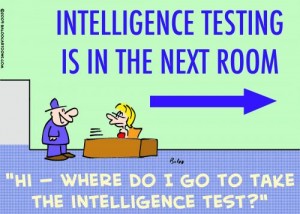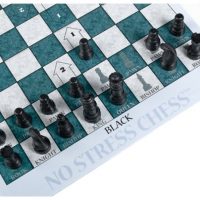
IQ Tests for Children:
For lack of a better method, individual standardized tests are used to determine a person’s level of intelligence. Level of intelligence can be used to determine who qualifies for the label of gifted and in the case of children, who qualifies for needed gifted services.
A problem educators face is how to narrow the pool of those children tested for gifted. IQ tests for children are expensive for two reasons: the individual tests themselves are expensive and then there is the cost of the person administrating the test. Whether it is a school counselor or a psychologist, they are paid an hourly wage or a flat fee. Time is money and these tests take many hours to administer and then score.
In order to narrow the pool of those tested for gifted, many school districts use state testing scores as a way to find a pool of possibly gifted children. The problem with this is students are prepped for state tests. The test reflects more an ability to remember information taught than anything else.
When districts can afford it, I believe a test such as the Otis-Lennon School Ability Test (OLSAT) is a better choice as a screening tool for gifted because it tests reasoning and thinking ability. The OLSAT can be used with any grade and is a group test, like the state tests. However, it measures verbal, quantitative, and spatial reasoning ability, therefore making it a better screening tool for gifted children.
Often school districts will also have the classroom teacher fill out a questionnaire in hopes of narrowing the pool with children who not only scored well on a pencil and paper exam but also have gifted characteristics.
Once a district has determined their pool to be tested for gifted, an Intelligence Quotient (IQ) test will be administered by a qualified professional.
There are two IQ tests for children I have found to have high reliability:
Wechsler Intelligence Scale for Children: The WISC V is the most current version of the WISC. This intelligence test is typically used as the primary indicator of giftedness in a child from ages 6 to 16.
The WIPPSI, the version of the Wechsler for younger children may be used for ages 2.5 to 7. Although, I believe identifying the gifted child is more difficult with children younger than eight. There are several factors which make it difficult to tell the intellectual power of a very young child.
For one, strong beginnings at home can tip the scales for young children as they may appear highly intelligent because they have a strong knowledge base of letters, numbers, etc. However, when a child gets to be around the age of eight, those good beginnings begin to level out.
The WAIS is the adult version of the Wechsler for people over the age of 16.
Generally an IQ of 130 or above is considered gifted by most school districts. However, due to funding and space, districts may take lower IQs because they can or they may require a higher IQ because they are operating on limited resources. As a reminder: a score of 100 is considered average.
Stanford Binet 5: The SB 5 is the most current version of the Stanford Binet for ages 2 to adult. Some professionals prefer the SB because they can use one test for all ages and they appreciate the variety of performance based tests without putting emphasis on speed.
It used to be a person who scored much higher in performance on an IQ test (versus the verbal parts of the test) could have a higher score with the SB, than with the WISC.
For example, I once tested an eight-year-old girl for gifted who had a 25 point split between her verbal IQ and her performance IQ on the WISC III. It was decided she should be tested again with the SB. Her IQ on the WISC III was a 128, not a qualifying score for the gifted program, but on the SB she scored a 131, which did qualify her for the program.
However, Wechsler made changes with the WISC IV such as, adding an Extended Norms Technical Report #7 which increased the ceiling of the test to over an IQ of 160 and allowing for more response time, both which should benefit in the testing of gifted children.
Also, keep in mind that when a score, such as 130, is given it is part of a range, meaning the score could be higher or lower by several points if the person were retested in the future.
As human beings we are constantly in a state of change, physically and mentally. While our IQ may vary by a few points over time or the standards for acceptance into gifted programs vary from district to district, it is always important to recognize and identify a student’s strengths and needs.
Also: Should you tell your child their IQ score?
Source: http://nswagtc.org.au/blogs/early-childhood/288-disadvantages-of-using-the-stanford-binet-version-5.html




There is a good online screening test for giftedness that was developed in collaboration with our department at UCLA. It is at http://www.psy-ed.com/wpblog/psychological-assessments/gifted-assessments/#test
please send me bookmark IQ and EQ kids test
My daughter is almost old enough to enter the public school system. She has always been so quick to pick up concepts we’ve presented to her. I didn’t realize that performing an IQ test can tell us if she should qualify for the label of being gifted. It seems like this could help us get her started on the right track.
How many test used for measuring the intelligence of childern